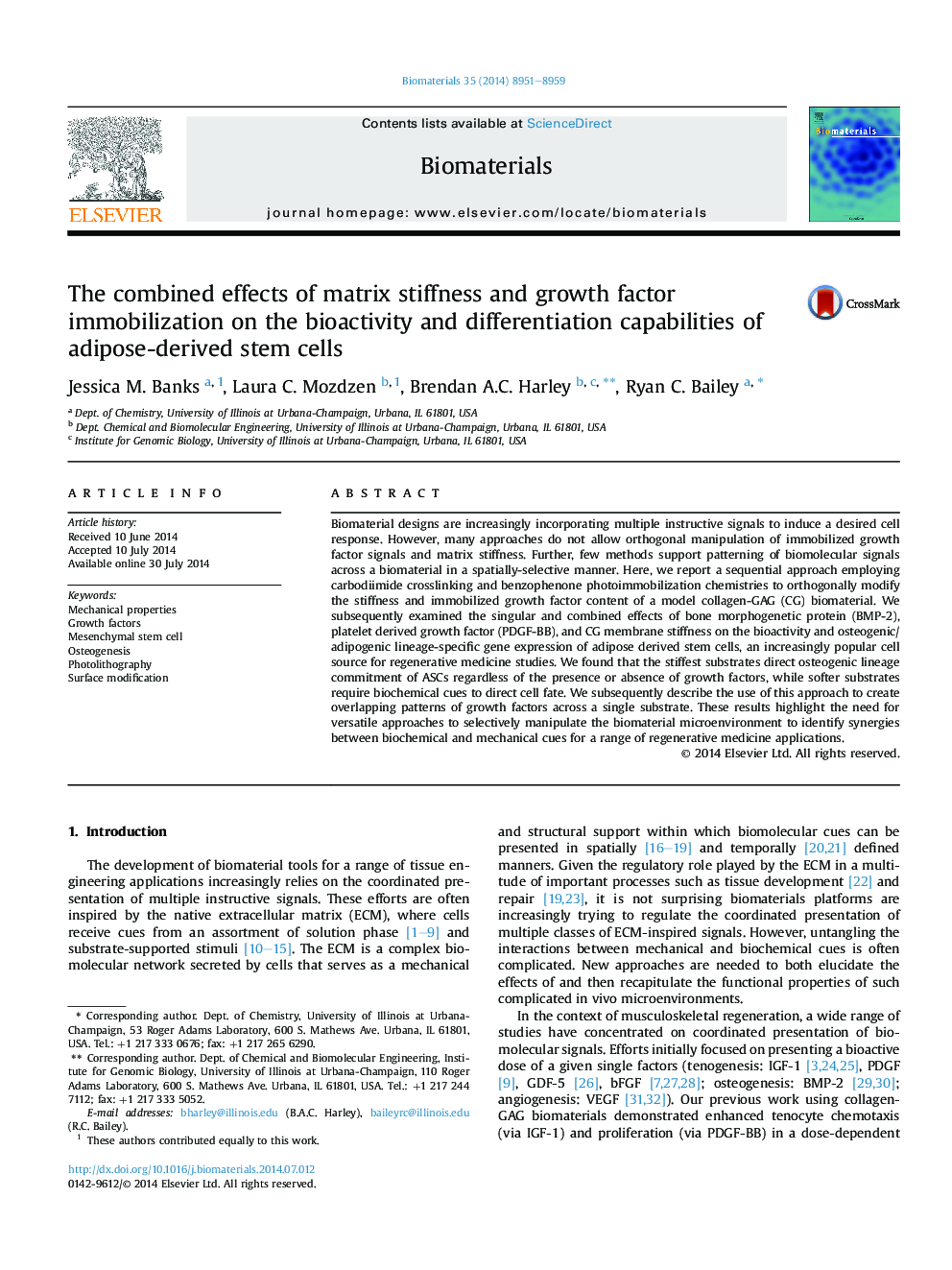| Article ID | Journal | Published Year | Pages | File Type |
|---|---|---|---|---|
| 10227315 | Biomaterials | 2014 | 9 Pages |
Abstract
Biomaterial designs are increasingly incorporating multiple instructive signals to induce a desired cell response. However, many approaches do not allow orthogonal manipulation of immobilized growth factor signals and matrix stiffness. Further, few methods support patterning of biomolecular signals across a biomaterial in a spatially-selective manner. Here, we report a sequential approach employing carbodiimide crosslinking and benzophenone photoimmobilization chemistries to orthogonally modify the stiffness and immobilized growth factor content of a model collagen-GAG (CG) biomaterial. We subsequently examined the singular and combined effects of bone morphogenetic protein (BMP-2), platelet derived growth factor (PDGF-BB), and CG membrane stiffness on the bioactivity and osteogenic/adipogenic lineage-specific gene expression of adipose derived stem cells, an increasingly popular cell source for regenerative medicine studies. We found that the stiffest substrates direct osteogenic lineage commitment of ASCs regardless of the presence or absence of growth factors, while softer substrates require biochemical cues to direct cell fate. We subsequently describe the use of this approach to create overlapping patterns of growth factors across a single substrate. These results highlight the need for versatile approaches to selectively manipulate the biomaterial microenvironment to identify synergies between biochemical and mechanical cues for a range of regenerative medicine applications.
Keywords
Related Topics
Physical Sciences and Engineering
Chemical Engineering
Bioengineering
Authors
Jessica M. Banks, Laura C. Mozdzen, Brendan A.C. Harley, Ryan C. Bailey,
